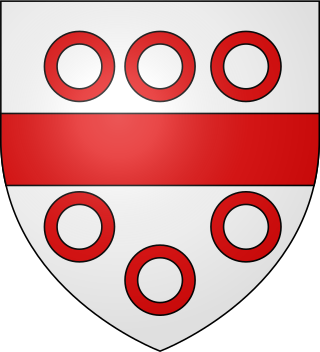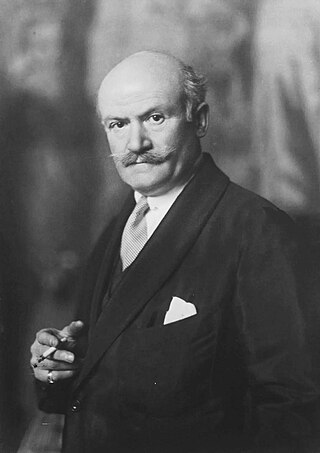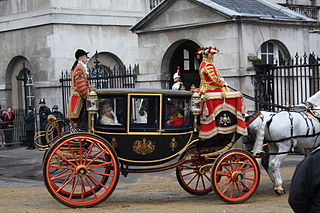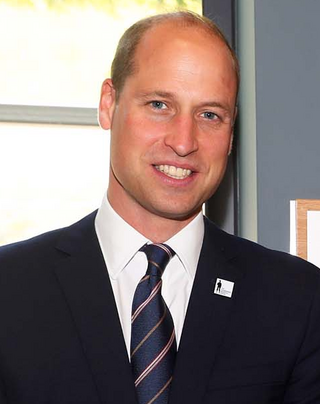Styles represent the fashion by which monarchs and noblemen are properly addressed. Throughout history, many different styles were used, with little standardization. This page will detail the various styles used by royalty and nobility in Europe, in the final form arrived at in the nineteenth century.
Peerages in the United Kingdom form a legal system comprising both hereditary and lifetime titles, composed of various ranks, and within the framework of the Constitution of the United Kingdom form a constituent part of the legislative process and the British honours system. The British monarch is considered the fount of honour and is notionally the only person who can grant peerages, though there are many conventions about how this power is used, especially at the request of the British government. The term peerage can be used both collectively to refer to the entire body of titled nobility, and individually to refer to a specific title. British peerage title holders are termed peers of the Realm.
The Peerage of Great Britain comprises all extant peerages created in the Kingdom of Great Britain between the Acts of Union 1707 and the Acts of Union 1800. It replaced the Peerage of England and the Peerage of Scotland, but was itself replaced by the Peerage of the United Kingdom in 1801.
The Peerage of the United Kingdom is one of the five Peerages in the United Kingdom. It comprises most peerages created in the United Kingdom of Great Britain and Ireland after the Acts of Union in 1801, when it replaced the Peerage of Great Britain. New peers continued to be created in the Peerage of Ireland until 1898

Baron Lucas is a title that has been created twice in the Peerage of England. The second creation is extant and is currently held with the title Lord Dingwall in the Peerage of Scotland.

Earl Howe is a title that has been created twice in British history, for members of the Howe and Curzon-Howe family respectively. The first creation, in the Peerage of Great Britain, was in 1788 for Richard Howe, 4th Viscount Howe, but it became extinct upon his death in 1799. The second creation, in the Peerage of the United Kingdom, was in 1821 for Richard Curzon-Howe, 2nd Viscount Curzon, and it remains extant.

Viscount Astor, of Hever Castle in the County of Kent, is a title in the Peerage of the United Kingdom. It was created in 1917 for the financier and statesman William Waldorf Astor, 1st Baron Astor. He had already been created Baron Astor, of Hever Castle in the County of Kent, in 1916, also in the Peerage of the United Kingdom.

Philip Alexius László de Lombos, known professionally as Philip de László, was an Anglo-Hungarian painter known particularly for his portraits of royal and aristocratic personages. In 1900, he married the Anglo-Irish socialite Lucy Guinness, and he became a British subject in 1914. László's patrons awarded him numerous honours and medals. He was invested with the Royal Victorian Order by Edward VII in 1909 and, in 1912, he was ennobled by Franz Joseph I of Austria; becoming a part of the Hungarian nobility.

Baron Ravensdale, of Ravensdale in the County of Derby, is a title in the Peerage of the United Kingdom. It was created in 1911 for the Conservative politician George Curzon, 1st Baron Curzon, of Kedleston, who had previously served as Viceroy of India.

The Imperial Order of the Crown of India is an order in the British honours system. The Order was established by Queen Victoria when she became Empress of India in 1878. The Order was open only to women, and no appointments have been made since the Partition of India in 1947. The Order was limited to British princesses, wives or female relatives of Indian princes and the wife or female relatives of any person who held the office of:

Baron Greenwich was a title in the Peerage of the United Kingdom that has been created twice in British history.

Lady of the Bedchamber is the title of a lady-in-waiting holding the official position of personal attendant on a British queen regnant or queen consort. The position is traditionally held by the wife of a peer. A lady of the bedchamber would give instructions to the women of the bedchamber on what their queen wished them to do, or may carry out those duties herself.
James George Anson Butler, 5th Marquess of Ormonde was the son of James Arthur Wellington Foley Butler, 4th Marquess of Ormonde and American heiress Ellen Stager, daughter of Union General Anson Stager.
Suo jure is a Latin phrase, used in English to mean 'in his own right' or 'in her own right'. In most nobility-related contexts, it means 'in her own right', since in those situations the phrase is normally used of women; in practice, especially in England, a man rarely derives any style or title from his wife although this is seen in other countries when a woman is the last heir of her line. It can be used for a male when such male was initially a 'co-lord' with his father or other family member and upon the death of such family member became the sole ruler or holder of the title "in his own right" (alone).

Grace Elvina Curzon, Marchioness Curzon of Kedleston, GBE was an American-born British marchioness and the second wife of George Curzon, former Viceroy of India.

Baron Carrickfergus is a title in the peerage of the United Kingdom, referring to Carrickfergus in County Antrim, Northern Ireland. Its current holder, since its creation on 29 April 2011, is William, Prince of Wales, who was granted the title as a personal gift by Elizabeth II, on the day of his marriage to Catherine Middleton. On the same day he was also created Duke of Cambridge and Earl of Strathearn, with his bride becoming "Her Royal Highness The Duchess of Cambridge" as well as Countess of Strathearn and Baroness Carrickfergus as a result of the marriage. Traditionally, when male members of the British royal family marry, they are granted at least one peerage. Catherine uses the title "Lady Carrickfergus" in a fuller version of her titles and styles, Her Royal Highness The Princess of Wales, Countess of Strathearn and Baroness Carrickfergus.

Duchess of Edinburgh is the principal courtesy title held by the wife of the Duke of Edinburgh. There have been five Duchesses of Edinburgh since the title's creation. Following the accession of Charles III in 2022, the 3rd creation of the Dukedom of Edinburgh merged in the Crown. Following his parents’ wishes, on 10 March 2023, Charles III conferred the title Duke of Edinburgh to his youngest brother, Prince Edward, and his wife, Sophie, became the Duchess of Edinburgh.

The wedding of Albert Edward, Prince of Wales, and Princess Alexandra of Denmark took place on 10 March 1863 at St. George's Chapel, Windsor Castle. It was the first royal wedding to take place at St. George's, and the last wedding of a prince of Wales until Prince Charles and Lady Diana Spencer's 1981 wedding.











